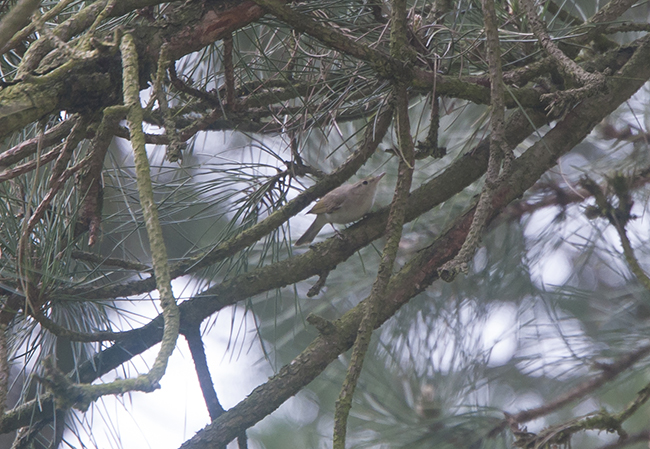I joined AJG who kindly collated the numbers in the sea watch hide this morning, wishing I had donned hat and gloves.
0620 to 10.10 with an hours break for a cup of tea and a warm up.
Brent Goose: 15E
Gadwall: 1E
Garganey: 1E
Common Scoter: 78E
Great Crested Grebe: 7 around
Fulmar: 2E
Gannet: 63E
Cormorant: c15 around
Oystercatcher: 5E
Sanderling: 20E
Dunlin: 4E
Curlew: 2E
Whimbrel: 3E
Great Skua: 2E
Little Gull: 1 Around
Kittiwake:18E
Little Tern: 2E
Common Tern: 177E
Sandwich Tern: c30 Tooing and Froing
Guillemot: 8E
Auk sp: 6E
Swallow: 2 around
Cuckoo by the entrance track
A walk from the ARC car park to the Pines found lots of singing Reed, Sedge and Cetti's Warblers, along with Reed Buntings, Chaffinches, Common and Lesser Whitethroats, Blackcap and even a Garden Warbler. A Cuckoo flew over as did a Marsh Harrier and 2 Hobbies.
From Dennis's a Black-necked Grebe occasionally coming out from under the bushes, plenty of Common Terns lining up to settle on the Tern Raft, unfortunately it has been taken over by a pair of Herring Gulls, so unless it is persuaded to move elsewhere it will be another year without any Terns nesting on Burrowes. Maybe next year there might be some islands. It seems that the Common Gulls and Herring Gulls have taken over all but one of the rafts on Dengemarsh. Perhaps a little persuasion there as well.
Corn Bunting at Cockles Bridge
At Cockles Bridge a lone Corn Bunting singing, 3 Yellow Wagtails and a Common Buzzard of note. there.
From Springfield Bridge 7 Hobby's, 3 Marsh Harriers, a booming Bittern and 2 Little Egrets of note.
Around the back of Scotney Yellow Wagtails, Corn Buntings and Skylarks appear to be doing well. On the island 6 pairs of Avocets among the Black-headed Gulls and a pair of Herring Gulls.
Another sea watch this afternoon with MH and AJG was very slow:
15.00-16.30:
Gannet: 20E
Oystercatcher: 1E
Sanderling: 2E
Common Tern: 20E 9W
Sandwich Tern: 18E 16W
Black Tern: 1E
Swallow: 4 in
Harbour Porpoise: 2
Around the back of Scotney Yellow Wagtails, Corn Buntings and Skylarks appear to be doing well. On the island 6 pairs of Avocets among the Black-headed Gulls and a pair of Herring Gulls.
Another sea watch this afternoon with MH and AJG was very slow:
15.00-16.30:
Gannet: 20E
Oystercatcher: 1E
Sanderling: 2E
Common Tern: 20E 9W
Sandwich Tern: 18E 16W
Black Tern: 1E
Swallow: 4 in
Harbour Porpoise: 2


















































